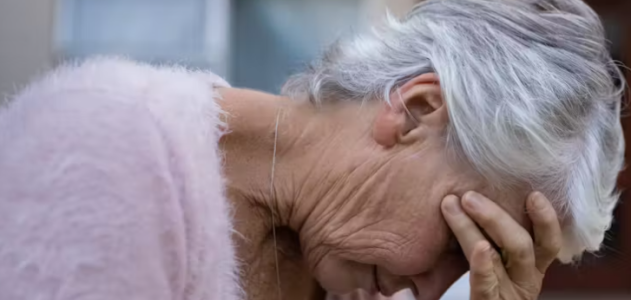Resident-to-resident aggression is common in nursing homes. Here’s how we can improve residents’ safety
- Replies 0
The Coroners Court of Victoria is undertaking an inquest into the deaths of eight aged care residents across six facilities, over a nine-month period in 2021.
Each death occurred after an interaction between residents, known as resident-to-resident aggression.
If your loved one is living in aged care, it’s natural to be distressed and concerned for their safety after hearing about these deaths.
Here’s what we know about when and where it’s more likely to happen, how relatives can safeguard their loved ones, and what’s happening across the system to reduce the risk of it occurring.
What does it look like?
Resident-to-resident aggression refers to aggressive and intrusive interactions between long-term care residents that would likely be unwelcome and potentially cause the recipient physical or psychological distress or harm. It includes physical, sexual and verbal aggression.
However, the term “aggression” is potentially misleading. In most cases, the residents involved are not consciously intending to cause harm.
The prevalence of resident-to-resident aggression in aged care has been estimated at 20%, but is likely under-reported. This means that over a month, 20% of aged care residents are likely to experience an incident of resident-to-resident aggression. This is usually verbal abuse or an invasion of privacy.
The variation in reported prevalence rates makes it hard to know if the rate is increasing.
The consequences of resident-to-resident aggression range in seriousness from functional decline, to psychological or physical injury, to death.
In 2017, we published a national study of deaths from resident-to-resident aggression in nursing home residents in Australia. Over 14 years, we identified 28 deaths.
Almost 90% of residents involved – either as an “exhibitor” (often referred to as the aggressor) or a target – had dementia. Three-quarters of those diagnosed with dementia had a history of behavioural and psychological symptoms of dementia, including wandering and physical aggression.
Exhibitors of aggressive behaviour were mostly male (85.7%), often younger, and more recently admitted to the aged care facility than the target.
Resident-to-resident aggression leading to death was most likely to occur between two male residents.
Half of all incidents leading to death involved a resident pushing and the target falling, leading to injuries such as hip fracture and head injury. This underscores the vulnerabilities posed by physical frailty among aged care residents.
Incidents resulting in death occurred mostly in communal areas, reflecting the ongoing challenges of an aged care system that relies on residents living together.
Learning from past incidents
Resident-to-resident aggression was previously brought to national attention by the death of a resident at the Oakden facility in South Australia. This led to a coronial inquest and the facility closed in 2017.
The case raised issues including the need for residents exhibiting potentially aggressive behaviour to have regular clinical reviews, accurate and detailed documentation, and adequate escalation and reporting of any incidents of aggression.
Since 2021, facilities have been required to report incidents of “unreasonable use of force”. The Australian Aged Care Quality and Safety Commission monitors these events through the Serious Incident Response Scheme.
The last report, from March 2023, provides a series of case studies and highlights the need for better approaches to behaviour support and risk assessment.
However, prevention requires a broader systems-based approach to better understand the problem, and generate and evaluate interventions. This should include reviewing trends at the facility, provider and national level.
Approaching individual situations
Resident-to-resident aggression is expected to become more common as more people are diagnosed with dementia.
Cognitive impairment in both the exhibitor of aggressive behaviour and targets makes this more complex, as a resident could become either one, depending on the precipitating circumstances.
In one-third of the cases we analysed, the exhibitor of aggressive behaviour and the target had been involved in an earlier incident together in the past 12 months. This suggests there are opportunities for intervention.
Are police involved?
When serious injury or death occurs, it is the role of police to investigate the incident and refer to the Office of Public Prosecutions, if appropriate.
Attributing legal responsibility is problematic and criminal charges are rarely filed. This may be because the residents involved are unfit for police interview or unfit to stand trial.
Alternatively, prosecution may not be deemed in the public interest.
Managing symptoms of dementia
Dementia may impair a person’s ability to reason, express their needs and manage their emotions. It can also impair their ability to respond, in a socially acceptable way, to interpersonal conflict.
Behaviour-management strategies to support the person with dementia include having a calm environment with a familiar routine and clear communication.
Over the past decade, more formal services have become available to help manage behavioural and psychological symptoms of dementia.
Dementia Support Australia operates a Severe Behaviour Response Team which is available 24/7, responding to referrals from health professionals within 48 hours.
Specialist dementia care units also operate across Australia, as recommended by the Royal Commission into Aged Care Quality and Safety final report.
Managing dementia symptoms requires multidisciplinary expertise spanning the aged care, disability and mental health sectors. Yet integrating these services remains a challenge.
The federal government has committed to addressing the sub-optimal management of residents living with dementia.
Supporting your loved one
If you’re worried about your loved one, the first step is to express these concerns directly to the facility staff, as you would with any other matter. Open communication helps the facility staff to get to know your loved one and provide more tailored support.
Being better informed about the subject can help you to advocate for your loved one.
The Older Persons Advocacy Network is available to residents for free, independent and confidential support. They can advocate for you if you feel your concerns aren’t being heard or your loved one’s care is compromised.
What happens next with the inquest?
The Coroners Court will investigate this important and distressing issue and aims to reduce the number of preventable deaths.
The coroner will hear the evidence, and may make formal recommendations about how to improve resident safety. Government agencies are required to consider and respond to these recommendations.
It’s clear we have a long way to go to safeguard the rights of older people living in residential care.
This article is republished from The Conversation under a Creative Commons license. Read the original article.








